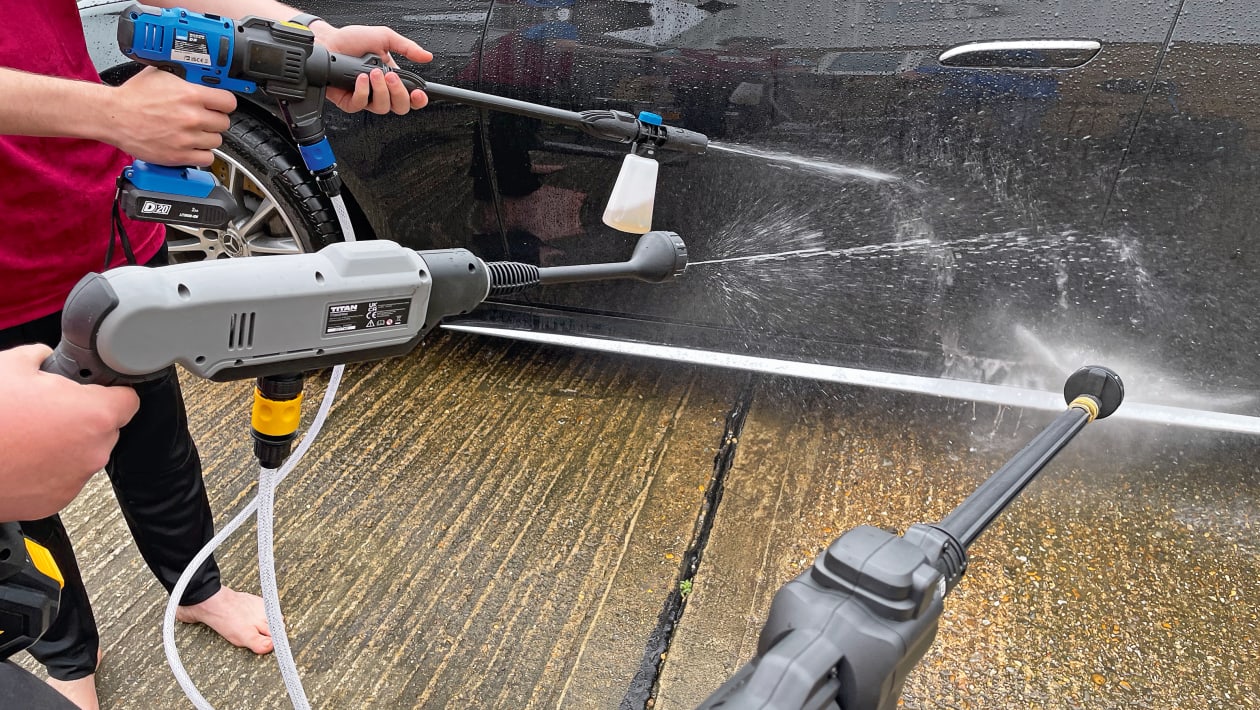
Jet washing isn’t a new concept—it’s evolved dramatically over time. What started as simple pumps and nozzles has evolved into sophisticated systems that power clean everything from delicate car exteriors to industrial machinery. The roots of this technology trace back to the early 1920s, when high-pressure water jets were used for cleaning. Over the years, innovations in pump technology, nozzle design, and pressure control have refined and revolutionized jet washing.
The impact of jet wash technology reverberates across numerous industries. From automotive maintenance and industrial cleaning to household chores, its versatility is astounding. Think precision cleaning in manufacturing plants, graffiti removal on city walls, or even rejuvenating your patio furniture—it’s everywhere, quietly making our lives cleaner and easier.
Components of Jet Wash Systems
1. High-Pressure Pumps
These pumps are the powerhouse of the system, amplifying water pressure significantly. They come in various types—electric, gasoline-powered, or diesel-powered—each tailored for different applications.
2. Nozzles and Hoses
Nozzles and hoses dictate the spray pattern and intensity. They’re designed with precision to control the flow and direction of the water, ensuring efficient cleaning while avoiding damage to surfaces.
3. Water Source and Filtration
Quality water is crucial for optimal performance. Many systems incorporate filters to prevent debris or contaminants from clogging the equipment, ensuring a smooth and effective operation.
Advantages and Benefits of Jet Wash Technology
- Rapid Cleaning: The sheer force of a jet wash allows for quick and thorough cleaning, cutting down the time spent on manual scrubbing or using traditional cleaning methods.
- Tackles Tough Grime: From oily residues on industrial machinery to stubborn stains on driveways, the high-pressure water stream effortlessly tackles dirt that’s hard to remove by hand.
- Reduced Chemical Usage: Jet washes often eliminate the need for harsh chemicals, making it an environmentally friendly cleaning option.
- Water Efficiency: Despite its powerful cleaning capabilities, jet wash technology uses less water compared to traditional cleaning methods, promoting water conservation.
- Reduced Labor Costs: By speeding up cleaning processes and minimizing manual effort, jet wash technology reduces labor costs in both professional and personal cleaning tasks.
- Long-Term Durability: Properly maintained jet wash equipment lasts longer, providing cost-effective cleaning solutions over time.
Safety Considerations and Best Practices
Safety is paramount when it comes to operating jet wash equipment. Here’s how to ensure a safe and responsible cleaning process:
Proper Handling:
- Read the Manual: Understanding the equipment’s specifications and proper usage guidelines is crucial.
- Maintenance Checks: Regularly inspect and maintain the equipment to ensure optimal functionality and safety.
- Training: Proper training for operators ensures they understand the equipment, safety procedures, and potential hazards.
Safety Gear for user:
- Protective Gear: Users should wear appropriate protective gear, including gloves, eye protection, and sometimes ear protection depending on the equipment’s noise level.
- Safe Distance: Maintaining a safe distance from the jet spray and avoiding pointing it at oneself or others prevents accidents.
Environmental Responsibility
- Water Disposal: Properly handle wastewater to prevent environmental contamination. Some areas might have regulations regarding water disposal from jet washing activities.
- Chemical Usage: If using cleaning agents, ensure they’re environmentally friendly and disposed of properly, adhering to local regulations.
Choosing the Right Jet Wash Equipment
Selecting the perfect jet wash system isn’t just about picking the shiniest model—it’s about finding the one that suits your needs like a glove. Let’s explore the factors to consider, top brands, and how to maintain these powerful machines.
Factors to Consider jet wash:
- Pressure Requirements: Determine the pressure needed for your cleaning tasks. Higher pressure isn’t always better; it depends on the surfaces you’ll clean.
- Flow Rate: Consider the gallons per minute (GPM) the machine offers. Higher GPM means faster cleaning but might use more water.
- Power Source: Decide between electric, gasoline, or diesel-powered machines based on your accessibility to power and the portability required.
- Nozzle Types and Attachments: Different nozzles and attachments cater to specific cleaning tasks. Look for machines that offer versatility in nozzle choices.
- Portability and Size: If mobility matters, opt for a portable unit. For heavy-duty tasks, a stationary unit might be more suitable.
- Budget Considerations: Balance your needs with the cost. Sometimes, investing a bit more upfront can save money in the long run.
Top Brands and Models in the Market
Several brands dominate the jet wash market, each offering its unique set of features and advantages:
- Kärcher: Known for its innovation and reliability, Kärcher offers a range of jet washers suitable for household and commercial use.
- Ryobi: Renowned for its versatile range, Ryobi’s jet washers often come with interchangeable nozzles and adjustable pressure settings.
- Sun Joe: Affordable yet powerful, Sun Joe’s models cater to various cleaning needs, from light-duty to heavy-duty tasks.
- Nilfisk: With a focus on durability and performance, Nilfisk’s jet washers are designed for professional and industrial applications.
Maintenance and Care Tips for Longevity
Maintaining your jet wash system ensures it performs optimally and lasts longer:
- Regular Cleaning: After use, clean the machine itself to prevent clogs and buildup.
- Proper Storage: Store the equipment in a clean, dry place away from extreme temperatures.
- Scheduled Maintenance: Follow the manufacturer’s maintenance schedule for oil changes, filter replacements, and other routine checks.
- Nozzle Care: Check and clean nozzles regularly to ensure they’re not clogged, which can affect performance.
Conclusion:
In a whirlwind exploration, we’ve navigated the dynamic world of jet wash technology—unveiling its history, mechanics, and multifaceted applications. From the evolution of these powerful systems to their pivotal role across industries, we’ve divided into their intricate mechanics and highlighted the advantages they bring: efficiency, environmental impact, versatility, and long-term cost-effectiveness. Safety considerations were underscored alongside tips for choosing, maintaining, and future-proofing these machines.

